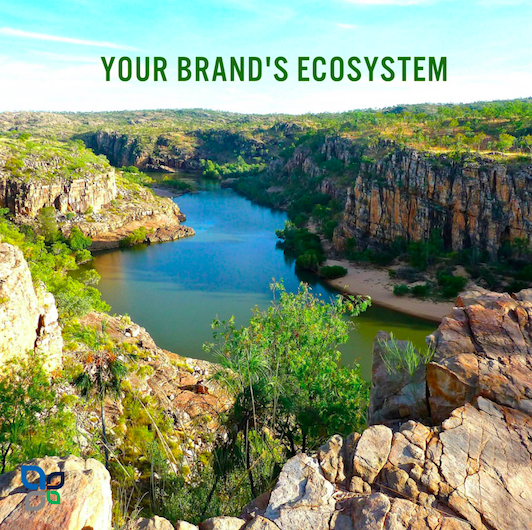I’ve been spending a lot of time writing lately, with the soft launch of my course IntegratED, coming in November. While putting pen to paper (or rather fingers to computer), it has forced me to think about how I view social media and the online marketing world. Through this process, it has further confirmed my belief that digital marketing, online marketing, social media, email marketing or whatever you want to call the online world it is truly an ecosystem.
An ecosystem is formally defined as:
“a community of living organisms in conjunction with the nonliving components of their environment (things like air, water and mineral soil), interacting as a system.”
I believe the online ecosystem or your brand’s ecosystem is defined very similarly in that:
Online Ecosystem: it is a community of people, brands, and companies (living organisms), in conjunction with nonliving components of their environment (social media, websites, email marketing, etc), interacting as a system within this online world.
People, brands, and companies leverage their environment (the internet) and thus build an interactive system that has the potential to build thriving businesses. The question is always, how do you make this happen?
I’ve heard so many people who jump on the internet and have this expectation that they will be an overnight internet sensation. While this CAN happen, this isn’t what typically happens. If you have the expectation of starting a facebook or instagram page and you will immediately start making money…I would recommend that you stop reading this. This article is about building an ecosystem to thrive online not a quick fix.
Building a thriving brand ecosystem takes a lot of work but it also takes an understanding of whom you are marketing too. When I begin working with anyone on their digital presence I always ask them, “Who is your ideal client?” Define them. Age, career, personality, place in life. I ask this because this is the first step in building a thriving ecosystem. Understanding who your client is will determine which, environments we want to use to build your brand’s ecosystem.
For example, if you said to me your ideal client is a teenager, I might recommend Snapchat and Instagram as the environments to begin building your ecosystem but if you told me your ideal client was a middle aged man who is college graduate, then I would say Twitter and Linkedin.
While these are generalizations and the process goes a bit deeper. Sprout Social has a great breakdown of the different environments and their demographics.
Once you have determined the environments you want to use to build your ecosystem the next step is to determine how you want to feed and interact with your ecosystem. This is where the strategy, the content, which networks to feed (how, when, where, why) and the point within the ecosystem that prospects convert into clients is determined. Again, this is a very striped down version however, I want to paint the picture of the reality of online marketing today.
It is no longer just one segment. One environment feeds another and the website is the point of conversion or perhaps it’s a personal phone call. There are literally hundreds of iterations of what a ecosystems looks like for you business.
By looking at a brand’s ecosystem from a 10,000 foot view it provides a way to determine success, milestones and accomplishments along the way. Whenever I begin working with a new client, this is how we determine where we are and where we want to go. Do you want a thriving ecosystem for your brand? Check out IntegratED or send us an email jamie@outliermarketinggroup.com




